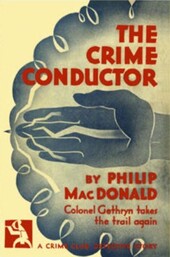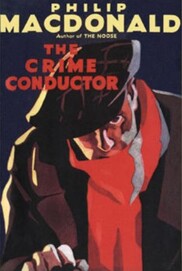
Which board-treading toes are being stepped on? Several: Paul Vanesco, whom Sigsbee had plucked from the chorus of a revue and groomed for leading-man status, now finds himself unceremoniously unemployed. Oliver Prideaux, war veteran and husband to beautiful actress Anne Massareen, must watch from a distance as Anne becomes the onstage lover of a glamorous film star. Mary Wheelwright, formidable stage actress, no longer has a role in Holiday, her own star overshadowed by the wattage created by Kristania and Massareen. And two theatrical promoters, Montague Locke and Robert Cray, would do almost anything to lure Lars Kristania away from Sigsbee’s production.
Perhaps it is not a surprise when the impresario is found dead in his bathtub in the early hours of a house party. What concerns Colonel Anthony Gethryn, who accompanies Inspector Merridew of the Metropolitan Police, are the little details: why are the dead man’s clothes stacked in an illogical order for undressing? Why are no bath towels in reach? And what about that shirt collar with its stud hole still closed? Gethryn quickly shifts his hypothesis from accident to murder, and soon Merridew identifies a suspect: rejected playwright (and “Indian hemp” addict) Lovell Fox broke into Willington Sigsbee’s home earlier that evening, hoping to settle a personal score with the man. But the theory preferred by the police – that an addled Fox, high on hashish, killed Sigsbee in a rage and then covered his tracks and wandered the grounds – doesn’t satisfy Gethryn, so he searches elsewhere to find the murderer.
To me, Philip MacDonald’s stories are enjoyable and energetic, and 1931’s The Crime Conductor, if not a top-tier Golden Age detective story, has much to recommend. The author is attuned to the mystery genre’s structures and tropes and often shows a keen interest to incorporate the elements of thriller and suspense. Conductor operates mostly as a fair-play puzzle story, but its structure is experimental and its climax builds to a confrontation where a decoy brings the murderer out of hiding so he or she can kill again.
How does MacDonald experiment with his narrative here? Book One is named “Elemental” and (until the country house murder) introduces its characters and plot threads in fragmented, impressionistic bits and pieces: we overhear a pub conversation here, read a breathless newspaper announcement there, then witness a quarrel between husband and wife shortly thereafter. Book Two, “Documental”, lets us read the at-times-chatty letters Gethryn writes to his own wife to update her on the progress of the case. I admire the author’s playfulness through his amateur detective’s personality, although the determined effort to play with structure feels strained at times. Parts of these letters recreate scenes through stageplay dialogue, complete with parenthetical actor business and slow curtains to end, while suspect lists with running commentary are also present. Book Three, in which the snare is set and the killer is caught, adopts the apt Latin phrase “Quod Erat Demonstrandum”.

As Nick Fuller notes, Philip MacDonald published nine mysteries in the years 1931 and 1932; such furious output surely results in some stories being more successful than others and some storylines getting a short shrift. Nick sees potential in The Crime Conductor but believes the solution falls short of fair-play, and I can certainly see the validity of the criticism. Bill Deeck and Mike Grost feel the same way, while Kate at crossexaminingcrime was also disappointed with the book. She finds particularly unsatisfying the information given to the reader “at secondhand”; I felt similarly. And over at The Invisible Event, JJ provides an astute assessment of the singular mix of entertainment and tedium on display in the book. Curtis Evans of The Passing Tramp concisely sums up the experimental author as "someone restless with the form and trying to do new things, but they didn't always work". Agreed, and that restlessness is often what makes MacDonald's thrillers and mysteries stand apart from the crowd, even if some are not fully successful.
Interestingly, the American first edition I accessed through my university’s interlibrary loan shows a copyright of 1931 and a library catalog received date of 10-12-31 (purchased at a cost of $1.70). That would date this Doubleday, Doran & Co. edition before the UK Collins edition, which John Curran identifies as a February 1932 release in The Hooded Gunman, his delightful and comprehensive illustrated history of the Collins Crime Club series. Curran also reveals that Philip MacDonald continues his experimentation with form in his next book, published two months after The Crime Conductor. In The Maze (1932), MacDonald presents his tale of murder in the form of “two floor plans, a verbatim transcript of the Coroner’s Inquest, a covering letter with the solution, and an Appendix.”
 RSS Feed
RSS Feed